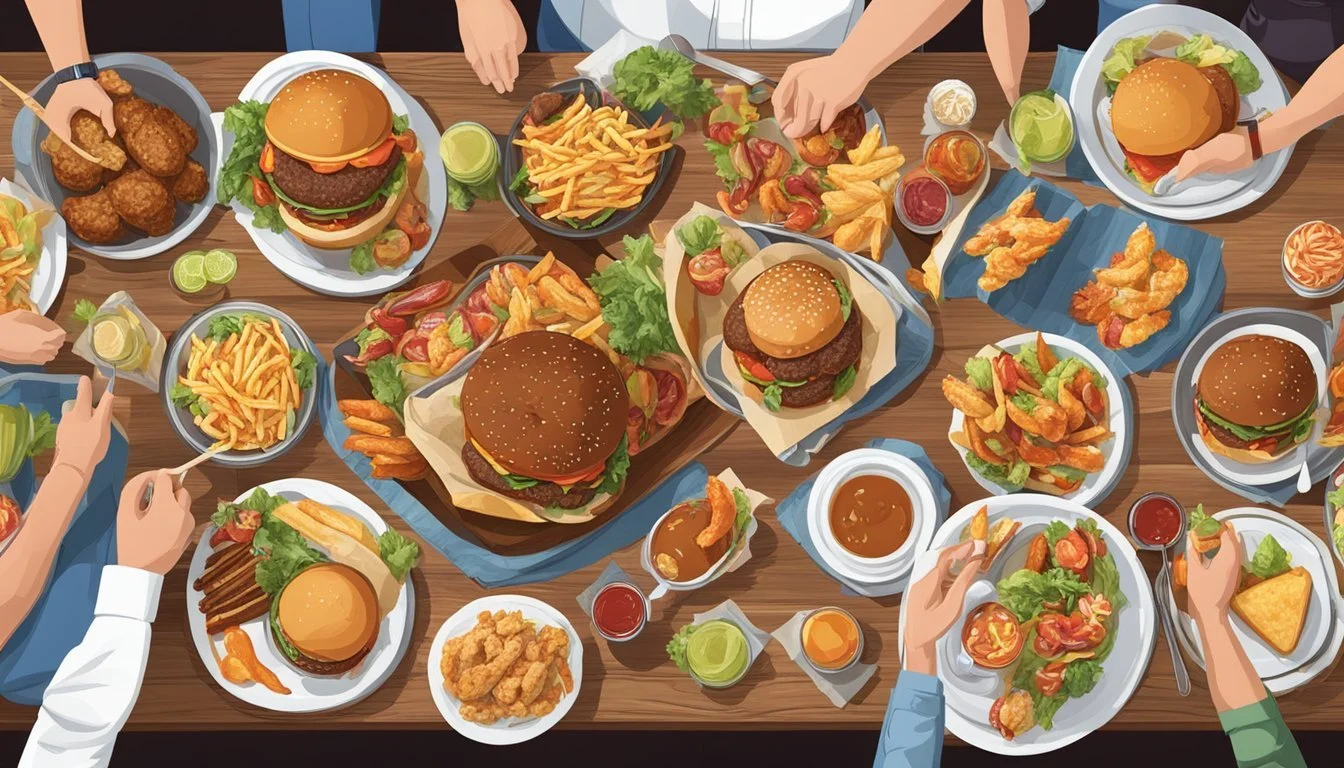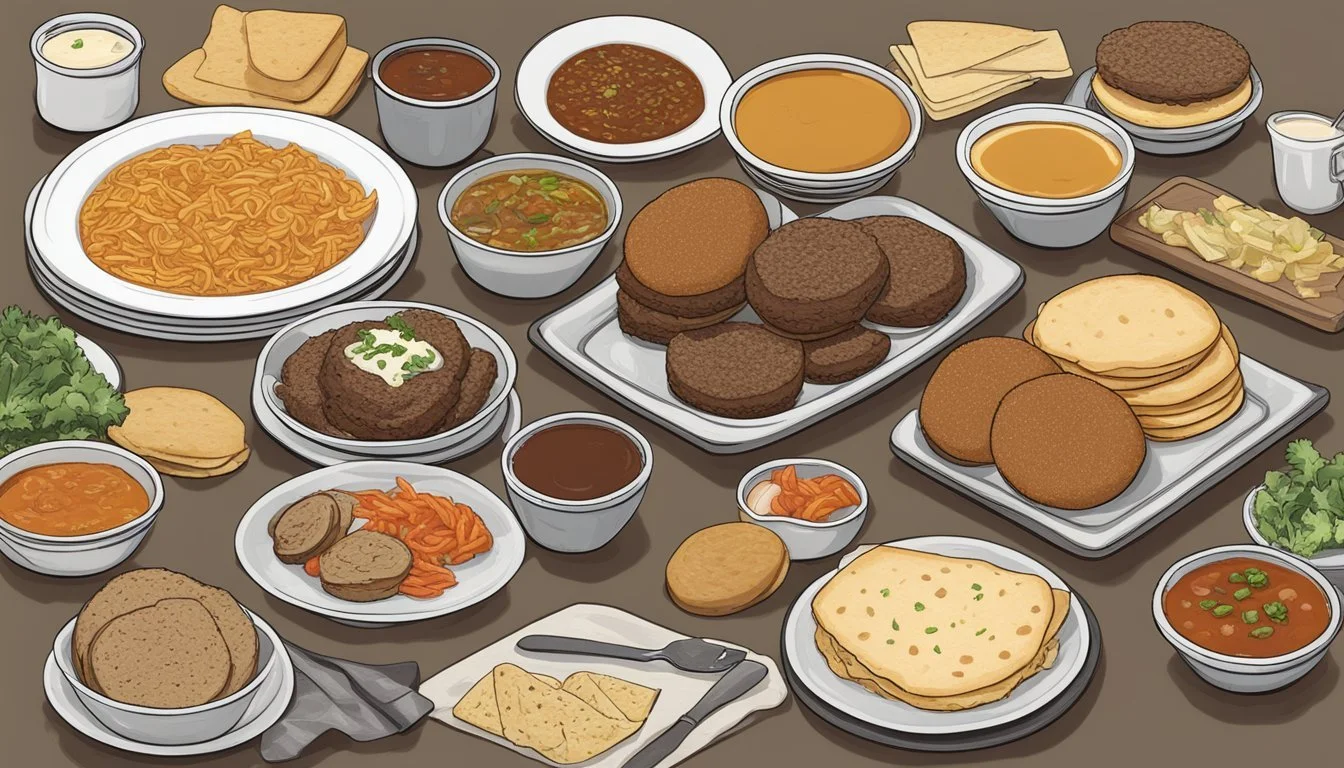North Dakota Food Challenges
A Guide to the State's Toughest Eats
North Dakota offers an array of culinary adventures for those who dare to test their eating limits. Food challenges in this state range from devouring oversized burgers to ingesting searing hot wings. These gastronomic feats are not only a test of one's appetite but also serve as entertainment for spectators. They often come with the lure of winning prizes, earning a spot on the 'Wall of Fame,' or gaining local notoriety for one's intestinal fortitude.
The food challenges scattered across North Dakota's restaurants capture the spirit of competition and community. Whether it's at a county fair or a local diner, participants can conquer everything from massive steaks to multi-layered cakes. These eating contests reflect the state's hearty cuisine and provide a unique way for travelers and residents alike to engage with North Dakota's food culture.
While engaging in these food challenges can be an exciting experience, they also highlight the state's diverse dining scene. From classic American eateries to unique local specialties, North Dakota's food challenges introduce participants to the rich flavors and beloved dishes that the Peace Garden State has to offer.
Understanding Food Challenges
Food challenges in the context of North Dakota not only offer entertainment and showcase competitive eating but also spark discussions on food-related issues like health and food security.
Defining Food Insecurity
Food insecurity occurs when individuals lack reliable access to sufficient, affordable, nutritious food. In North Dakota, this is a real concern for certain populations, particularly in rural areas. The USDA Food Research Access Map has identified several North Dakota counties suffering from potential food deserts, underlining the struggle against food insecurity within these communities.
The health implications of food insecurity are substantial. Those without access to nutritious food options may face higher risks of developing health conditions such as obesity, diabetes, and cardiovascular diseases. Moreover, it's not only a matter of physical health but also public health, which becomes compromised when whole communities do not have access to healthy food.
On the community level, the presence of food challenges can reflect the local culture and highlight the area's food preferences, but it also brings to light the contrast between food excess and scarcity. While they draw crowds and celebrate culinary feats, food challenges may inadvertently draw attention to the stark disparities in food distribution and availability.
It's crucial to understand that tackling food insecurity extends beyond individual health to encompass community well-being and the broader public health spectrum. Recognizing and addressing these disparities is fundamental to achieving an equitable food system in North Dakota and beyond.
Exploring North Dakota's Food Landscape
North Dakota offers a contrasting food landscape where the vibrancy of agricultural produce and the challenges of distribution co-exist. These aspects are critical for understanding the state's unique food sustainability and access issues.
Rural Food Sustainability
In North Dakota's rural areas, the concept of food sustainability intertwines with community efforts and economic strategies. The Rural Food Sustainability Grant Program is pivotal in reinforcing local grocery services and supporting the development of rural food co-operatives. These cooperatives play an essential role in aggregating, storing, and distributing locally produced food, thus tackling challenges particular to rural settings.
Food Access in Urban vs. Rural Areas
A stark differentiation exists between urban and rural North Dakota regarding food access. While urban residents may have convenient access to full-scale grocery stores, rural citizens are often faced with the reality of living in a food desert. A "food desert" is an area where access to affordable, healthy food options is limited or nonexistent due to the absence of grocery stores within a reasonable traveling distance. Instead, rural North Dakotans might rely on convenience stores that often lack fresh produce and diverse food items.
Community and Economic Impact
In North Dakota, the interplay between food sustainability initiatives and economic growth is a critical factor in fostering vibrant rural communities. These initiatives not only support local jobs but also enhance overall community wealth and quality of life.
Local Economic Development
The Rural Food Sustainability Grant Program aims to fortify local economies by addressing the unique food access challenges in rural areas. Through funding feasibility studies and local food projects, this program assists communities in becoming more self-reliant. For instance, recipients of this grant are empowered to create sustainable food systems that generate local jobs and stimulate economic development, reinforcing community resilience.
Local Jobs: Creating jobs within food production and distribution
Economic Growth: Encouraging the development of local grocery services
Community Resilience: Building capacity for rural areas to sustain their food needs
The Role of Food in Community Health
While economic factors are critical, the ongoing challenges regarding food access in North Dakota have a pronounced impact on community health. Issues such as food insecurity correlate with chronic diseases, indicating a need for improved food systems. Initiatives like the Rural Food Sustainability Grant aim to not only support economic development but also to ensure that nutritious options are available, which is fundamental to improving community health outcomes.
Food Access: Enhancing availability of nutritious food choices
Health Outcomes: Reducing food insecurity's link to chronic diseases
Quality of Life: Increasing overall well-being through better nutrition
By cultivating sustainable food practices and supporting economic opportunities, North Dakota's rural communities can nurture a healthier population and a more robust economy, solidifying their futures.
Solutions and Programs
Addressing food challenges in North Dakota involves innovative programs and collaborations that aim to promote healthy eating and expand the availability of nutritious options. Specifically, these include initiatives to support healthy foods, grants to improve food sustainability, and strategic partnerships.
Healthy Food Initiatives
North Dakota has embarked on a journey to ensure that healthy foods are accessible to all residents. Initiatives such as farm-to-school programs enable schools to serve locally sourced produce, which not only supports students' nutrition but also boosts local agriculture. Furthermore, organizations like the Great Plains Food Bank work tirelessly to distribute healthy food options to those in need, often targeting food deserts where such options were previously scarce.
Rural Food Sustainability Grant Program
The Rural Food Sustainability Grant Program is a significant stride towards revitalizing food environments in rural areas. With a focus on enhancing grocery services, access to food, and the development of food co-ops, this program aims to forge a resilient food supply chain. Food co-ops, in particular, play a crucial role by centralizing the aggregation, storage, processing, and distribution of food, making it more accessible to rural consumers.
Partnership Efforts
Strategic partnerships are key in reinforcing North Dakota's food systems. By combining the strengths of various stakeholders—government departments, agricultural organizations, and education institutions—North Dakota strives for a food-secure future. Notably, projects like FARMS (Northern Plains AgTech Engine for Food systems Adapted for Resiliency and Maximized Security), which found support through NSF competition funding, exemplify how collaboration can lead to impactful results in food security and sustainability.
Case Studies and Success Stories
In addressing the challenges of hunger and food insecurity in North Dakota, some communities have implemented initiatives with noteworthy outcomes. The following narratives showcase both the process and results of these efforts, providing insight into how focused strategies can alleviate hardship.
City of Milnor Success
The City of Milnor has emerged as an exemplary model for rural food access. It utilized targeted interventions to address its nutritional needs, working collaboratively with local organizations such as Strengthen ND. Focused on the establishment of community gardens and incentivizing local grocers, Milnor made significant strides in providing fresh produce to its residents. The success seen here underscores the impact of localized solutions and community-driven efforts.
Key Actions:
Partnership with Strengthen ND
Development of community gardens
Support local grocery initiatives
Pembina County JDA Initiative
In Pembina County, the Pembina County Job Development Authority (JDA) has taken an innovative approach to counteract food deserts. They’ve facilitated partnerships between local farmers and markets, aiming to enhance the availability of locally-grown food. Additionally, transportation services for seniors to access grocery stores were bolstered. Pembina County JDA's initiative exemplifies how strategic economic development can also serve nutritional advancement.
Achievements:
Increased local food sales
Improved food logistics for seniors
Stronger farmer-to-market connections






